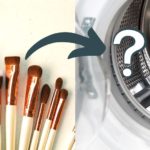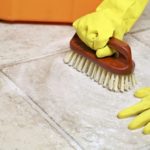Thinking about buying a lint brush, but not sure if it’ll make much of a difference to your clothes? You’ve come to the right place.
Learn more about lint brushes and find out if they really work in this post!
What Is a Lint Brush?
A lint brush is a very traditional tool that is used to remove dust, general debris (skin cells/crumbs), fibres, and hair from various surfaces.
The brushes can be used to clean items including, but not limited to, clothes (coats, trousers, and tops, for example), furniture, curtains, blankets, and car seats. You should, however, take care when cleaning delicate materials.
The lint brush’s head is usually two-sided: one side is made up of very soft, stiff bristles that can remove hair and grime, and the other side is covered in a special smooth fabric that attracts lint.
You can pick what side to use based on the material you’re cleaning and the type of dirt you’ve got to clear away.
To use a lint brush, you just lay your item on a flat surface or wear it, and start brushing the material with one side of the lint brush.
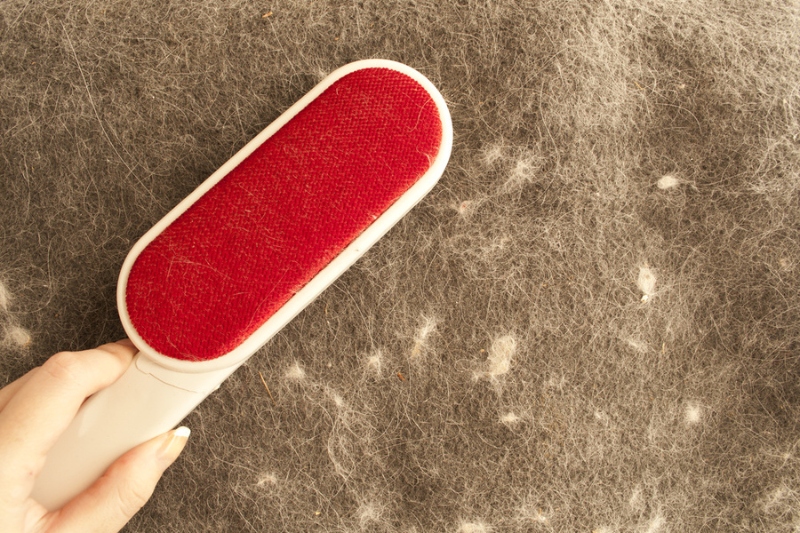
You’ll quickly see the brush head getting clogged up with lint and dirt as you brush your way around the entire garment.
When using a lint brush, you generally have to brush in one direction. And you have to clear the debris from the head as you go, otherwise it’ll clog up and it won’t work effectively!
You can pick up lint brushes in various forms, including plastic, wood and metal, and the brush heads come with different types of soft bristles that are designed to tease the grime gently off surfaces.
Lint brushes can be bought from lots of different shops, including leading supermarkets and online. (They’re usually found near the cleaning products’ aisle in shops).
Do Lint Brushes Work?
Yes, lint brushes can remove a significant amount of lint from clothes, upholstery and other fabric surfaces. But you’ve got to dedicate time and patience to the brushing task.
And although brushing debris from material isn’t necessarily a difficult task, it can be a tiring task at times. So, it’s better if you keep on top of the brushing, so you don’t end up with outfits, chairs, and curtains that are overrun with lint, dust, and general grime!
Advantages of Using a Lint Brush
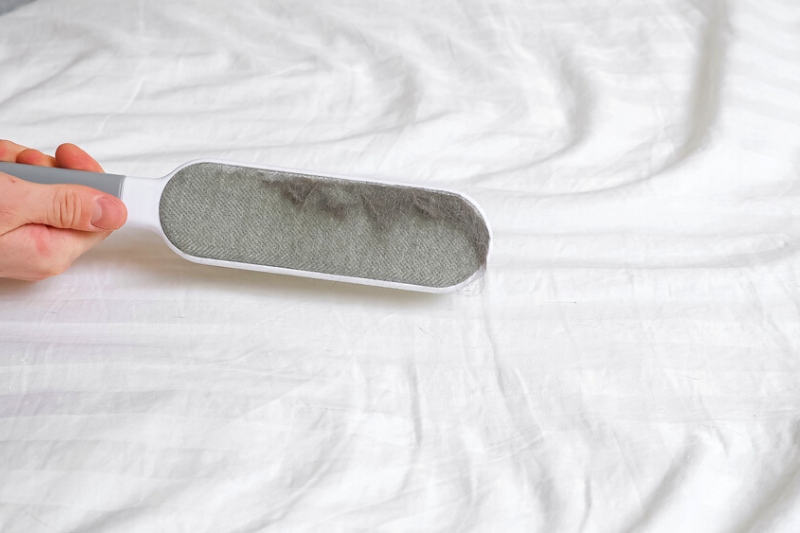
Here are the main benefits of lint brushes:
- Improve the appearance of outfits and upholstery – There’s nothing worse than going out with dust on your top and hair on your trousers. Or worse still, inviting your mother-in-law over, and releasing five minutes before she arrives that the sofa is covered in cat hair! As luck would have it, a quick brush with a lint brush can solve all these problems for you.
- Easy to use – Lint brushes are very simple to use and you can start working with the brush immediately. You don’t have to shuffle through instruction manuals before you get going! You just unwrap the brush and start brushing.
- Won’t leave a sticky residue on clothes, upholstery and other surfaces – Some lint rollers tend to leave a glue-like mess on materials they’ve been used on.
- Improve the quality of outfits – Some clothes get bogged down by hair and lint, so a quick brush can do the world of good. And not only will the item look cleaner, but it’ll also feel better, and it should have a better lifespan because you’ve taken care of it!
- You can use a lint brush to remove general dirt from clothes in between washes. – This, in turn, means that you might not have to wash certain items as often.
- Environmentally friendly – You don’t need to replace any of the parts in a lint brush, you just need to clean it out. Then you can continue to use the brush.
- The soft bristles on the brush head mean that these brushes can be used on a wealth of materials.
Disadvantages of Using a Lint Brush
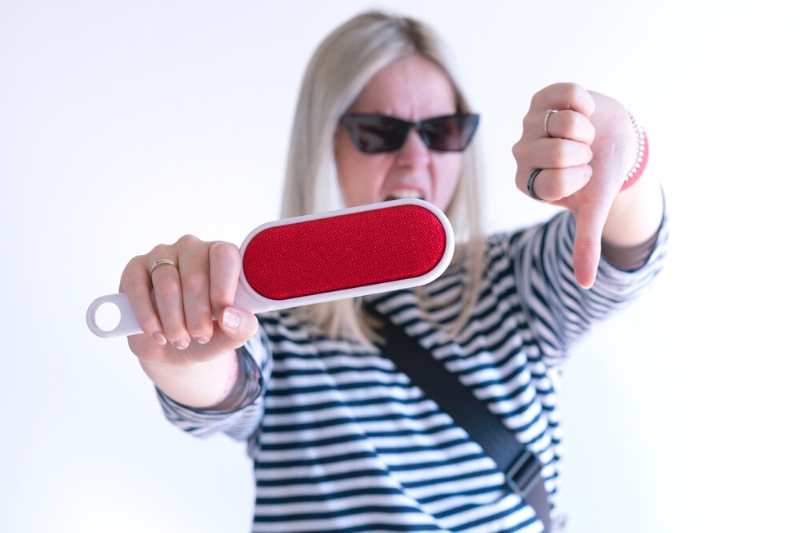
Here are the main drawbacks of lint brushes:
-
- Although lint brushes are effective at teasing out lint and dirt, there are some things, like pet hair, that they sometimes struggle with – This is especially true if you’ve got lots of pet hair on your clothes/sofa, and if it’s been firmly wedged into the material’s fibres! You might spend quite a bit of time brushing these kinds of surfaces.
- It can be tiring work using a lint brush to remove all the debris from a patch of material – Particularly, if you’ve got to remove stubborn pet hair from garments!
- You must maintain a lint brush – If you don’t clean out the grime and lint from your brush, it’ll sit and fester there. A clogged brush, in turn, won’t be very effective at picking up grime the next time you use it.
Do Lint Brushes Damage Clothes?
Most lint brushes come with soft bristles and fabric pads that are designed not to damage clothes.
However, if you use the tool haphazardly or you brush an item of clothing, particularly a delicate one, too rough, you run the risk of damaging the material in question.
But if you take your time and brush your clothes gently there shouldn’t be too much of a problem!
And if ever you’re in doubt about using a lint brush on an item, do a discrete patch test before you start (pick an inner seam, for example).
A quick test like this will tell you if the bristles are going to snag the material. And if this is the case, you can stop working with the lint brush immediately and find an alternative solution.
Lint Brush Alternatives
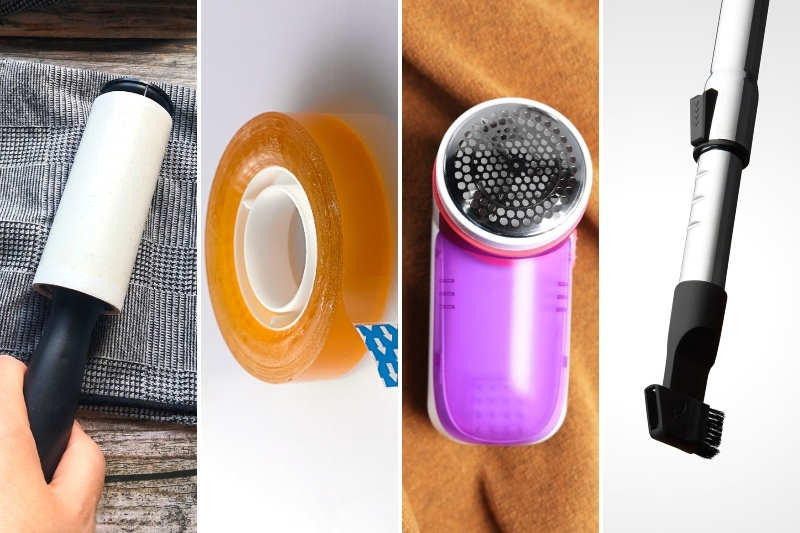
A lint brush may not be for everyone, so here are some other options you could look into:
- Lint roller – This is essentially a roll of sticky paper attached to a plastic handle, that you roll over your clothes to remove lint and general debris.
- Sellotape – This is an old-school method and isn’t really the best option on this list, especially if you’ve got lots of lint and hair to clean off. But it’s a handy backup if you don’t have an actual tool at hand. Just cut some tape, pop a strip of tape onto the item, pat it down, and pull the tape off – the grime should be attached to the Sellotape. Just repeat the process until you’re done.
- Clothes shaver – Also known as a fabric shaver, this tool can help remove lint and bobbling on clothing.
- Vacuum cleaner – Use a soft attachment, and keep in mind that this may not be the best option to try if you’re cleaning delicate materials).
Lint Brush vs. Lint Roller: Which Works Best?

A lint brush sort of looks like a hairbrush, but it has very soft bristles and can be used to remove debris from clothes and other fabric covered surfaces. These brushes can be bought in different shapes, and they’re not overly expensive.
A lint roller, on the flip side, is a cylindrical shaped tool that has a handle on the end. The upper cylindrical part of the roller is covered in sticky tape, and you roll this part over your clothes and upholstery to pick up dust and hair.
Both a lint brush and a lint roller have their merits. A lint brush can be used over and over again, it doesn’t leave any gluey residue on surfaces, its bristles are gentle on materials, and it’s super easy to use.
A lint roller, on the other hand, can be bought for less, is very easy to use, and sometimes picks up dust quicker, so requires less work.
And they also have their downsides. A lint brush can be more tiring to use because you have to gently tease dirt off clothes, whereas a lint roller grabs dust fairly quickly.
The main drawback of a lint roller is that it can sometimes leave a sticky residue on materials that it comes into contact with, which isn’t ideal.
When it comes to deciding what’s best you need to consider how much you want to spend, how much time you have to gather lint off your clothes, and whether or not you want to purchase a gadget that can be used time and time again.
If you’re looking for a simple solution that works quickly and with very little effort, you should think about buying a lint roller.
But if you’re after something more hard-wearing that’s going to be used many times, and you can dedicate time to brushing your clothes, you should consider getting a brush.
Read our article comparing lint brushes vs. lint rollers to understand the pros and cons of each better.

Bethan has a passion for exploring, reading, cooking and gardening! When she’s not creating culinary delights for her family, she’s concocting potions to keep her house clean!

